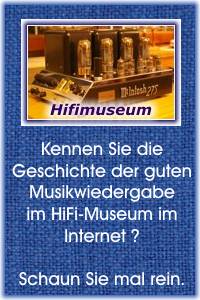Erläuterungen zu diesen 1948er US-AUDIO Seiten
Die hier stehenden amerikanischen Artikel aus 1948 (aus der US-AUDIO) sind teilweise sehr gewöhnungsbedürftig, weil sie erstens aus einer längst vergangenen Zeit stammen und zweitens, weil dort in den USA ganz "anders" gedacht wurde als bei uns in Old Germany oder in Europa.
Vergleichbar mit unseren deutschen Hifi-Magazinen etwa ab 1962 ist jedoch, daß auch diese Zeitschrift ihre Anzeigen- Kunden und -Leser (be- oder ab- ?) werben mußte.
Die Ausgaben der US-AUDIO von 1947 bis 1958 liegen in teilweise ganz miserablen PDF-Dateien vor, in denen die Reihenfolge der Seiten teils völlig wirr ist. Der Aufwande, einen einzigen Artikel komlett zusammenzubauen, ist daher erheblich. Die Fotos sind so gräuselig schlecht, daß sie nur in Ausnahmefällen eingebaut werden.
.
EDITOR'S REPORT
AUDIO HOBBYISTS (Loben wir uns mal wieder selbst)
• ALTHOUGH this magazine is published by and for audio engineers, we find that our policy of presenting practical articles, rather than highly mathematical, abstruse material, is attracting an ever-increasing number of readers for whom high-quality audio reproduction is solely a hobby. While most radio engineers automatically fall into this category, there are quite a number of other professional men, such as lawyers, doctors, etc., whose enthusiasm for better audio has encouraged them to make an intensive study of our field. As a result, many who are not engineers have been able to make useful contributions to the art.
Typical of these is George Douglas, an expert photographer, who contributes the interesting article on a three-way speaker system in this issue. Mr. Douglas' work conforms to sound engineering practice and the cross-over networks are carefully and accurately worked out. Although the speaker housing obviously represents a compromise between the requirements of best performance and best appearance, it serves exceptionally well in both respects. And we believe that this three-way system is the first to be described in detail in any technical magazine.
In our "Letters" column this month, there appears a comment by another audio hobbyist, Samuel Weissman, on the letter from S.J. White (Toward a New Audio) in our April (1948) issue. For the information of those who did not get this issue, Mr. White wrote brilliantly, but in general terms, regarding the facilities for bass and treble control which he had incorporated in his receiver.
Mr. Weissman's equally interesting comments are based in part on the common fallacy that exact reproduction of all transmitted audio frequencies, per se, represents perfect reproduction. What so many forget, and which Mr. White meant to convey, is that reproduction at a different loudness level from that which would be experienced in, for example, a concert hall, calls for a greater emphasis of some frequencies than of others, to make reproduced music sound, in a room, like a "live" program does in a concert hall.
A loudness control which does this automatically was described by David C. Bomberger, of Bell Labs. in our May issue. In addition, we must remember that the reproduced music is coming from a point source, the loudspeaker, and not from a distributed source, such as an orchestra. Binaural reproduction, with modified transmission technique, is a further refinement which is necessary for better reproduction. We shall soon make an interesting announcement regarding experiments along these lines.
.
WITH OUR AUTHORS
• SCHEDULED for our July issue is another interesting article on telephone recording by E.W. Savage, in collaboration with S. Young White. This one deals with the design of audio automatic gain control circuits, in which the requirements for this purpose differ greatly from those in the conventional p.a. system. A unique method of amplification for greater intelligibility is also outlined.
The article on the manufacture of record matrices by Harris, which was too long to be included in our last issue, will appear next month. C.G. McProud has another outstanding article, this time on the design and construction of a simple impedance bridge. Bertram Stanleigh is back with his review of popular records, and we expect that Winston Wells will have another instalment ready on electronic organs.
For broadcast engineers, there is an interesting article especially directed to those who may wish to construct a small studio, by an engineer who designed and operates one. There will be more for the professional recorder, as well as for the audio equipment designer.
We need articles concerning the audio end of professional sound-on-film recording to round out our coverage of the recording field. Engineers who feel that they have something new and useful to contribute on this topic are invited to write to us immediately.
The controversy over the inclusion of TV data in this magazine continues, but the majority prefer that we stick exclusively to audio, because much of the audio data is equally useful to the TV men. So be it.
J.H. Potts
.

